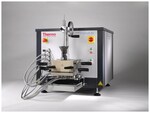Search Thermo Fisher Scientific
- Order Status
- Quick Order
-
Don't have an account ? Create Account
Search Thermo Fisher Scientific




In a small-scale customers can characterize materials like polymers, elastomers, additives and fillers to avoid problems in their production.
| Torque Rheometer | Yes |
| Description | HAAKE Rheomix PolyLab QC Lab Mixer |
| Unit Size | Each |
| Catalog Number | Specifications | Unit Size | Description | Price (TWD) | |||||||||||||||||||||||||||||||||||||||||||||||||||||||||||||||||||||||||||||||||||||||||||||||||||||
|---|---|---|---|---|---|---|---|---|---|---|---|---|---|---|---|---|---|---|---|---|---|---|---|---|---|---|---|---|---|---|---|---|---|---|---|---|---|---|---|---|---|---|---|---|---|---|---|---|---|---|---|---|---|---|---|---|---|---|---|---|---|---|---|---|---|---|---|---|---|---|---|---|---|---|---|---|---|---|---|---|---|---|---|---|---|---|---|---|---|---|---|---|---|---|---|---|---|---|---|---|---|---|---|---|---|
| QCMIXER | Each | HAAKE Rheomix PolyLab QC Lab Mixer | Request A Quote | ||||||||||||||||||||||||||||||||||||||||||||||||||||||||||||||||||||||||||||||||||||||||||||||||||||||
| |||||||||||||||||||||||||||||||||||||||||||||||||||||||||||||||||||||||||||||||||||||||||||||||||||||||||
Mixing, kneading, compounding and plasticizing
A typical mixer test is run at a defined speed (shear rate) versus time, and the material's response is recorded as torque. The mixing chamber is temperature-controlled precisely by independent heating and cooling zones, but due to the frictional heat in the mixing bowl, a change in the material's melt temperature is observed and recorded as measuring signal. This “Rheogram” (torque, melt temperature vs. time at constant speed) is characteristic for different materials or blends and often used as a “fingerprint” in Quality Control for incoming or outgoing product inspection. Different additives in type and concentration can be measured and quantified objectively through the melting behavior, consumed energy or melt viscosity (recorded torque).
Typical investigations